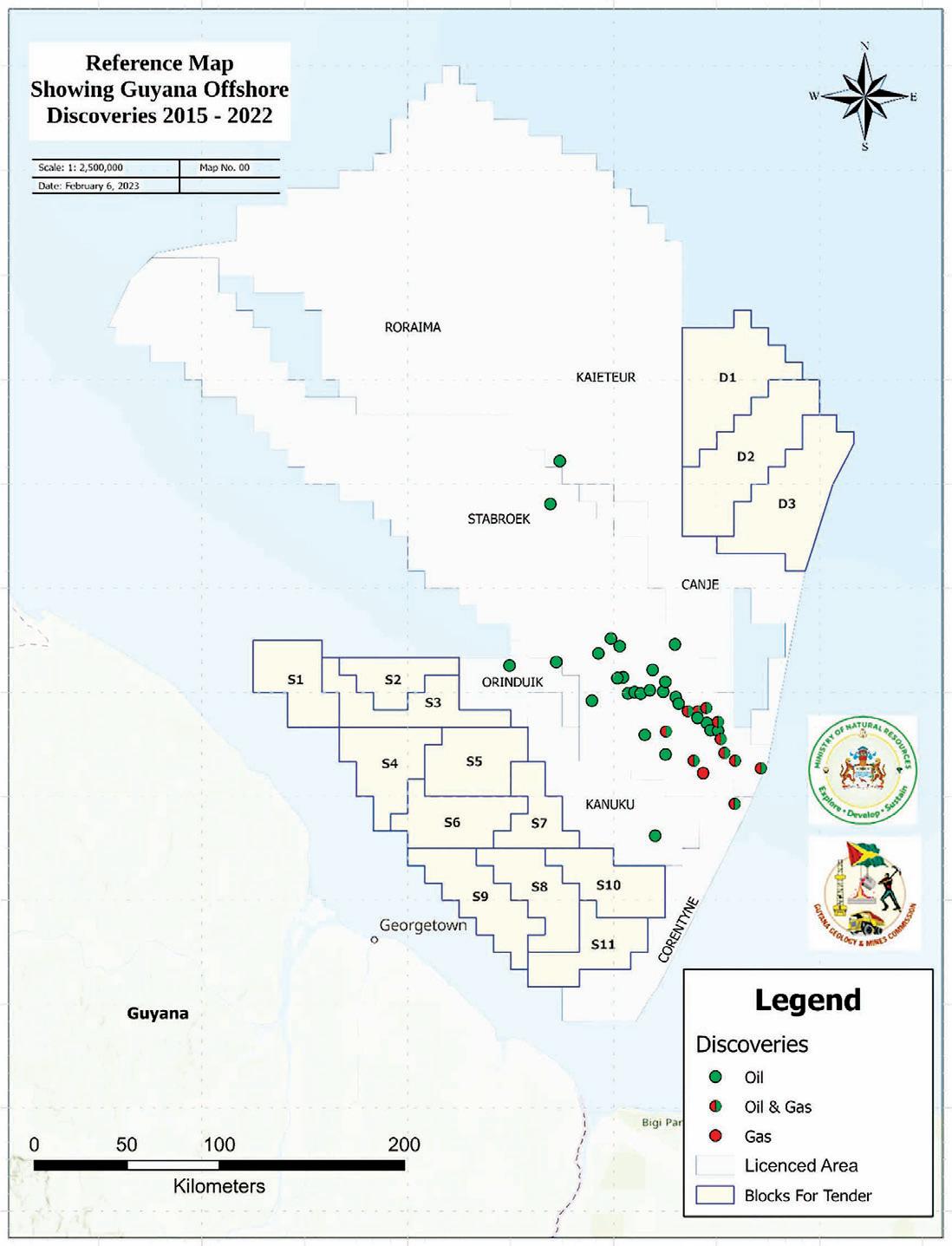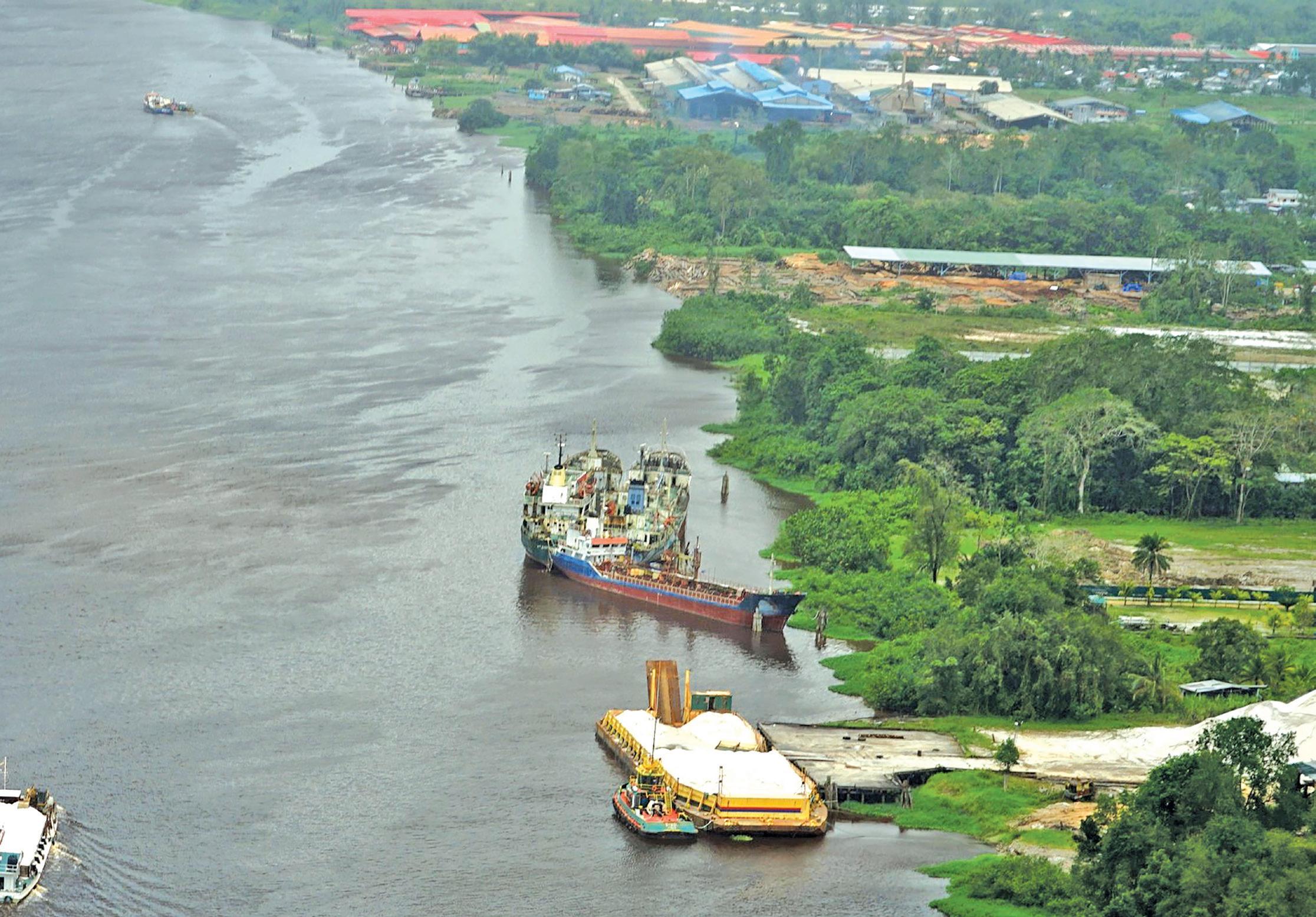
4 minute read
shallow oil blocks
– proposes to overhaul 1986 Petroleum Act
– all 14 blocks up for auction have received bids
In keeping with their often-repeated commitment to govern the oil and gas sector in full transparency, the People’s Progressive Party/Civic (PPP/C) has released the new, draft model Production Sharing Agreements (PSAs) for both deep and shallow oil blocks that will serve as the blueprint for all future agreements.
According to the Ministry of Natural Resources in a statement accompanying the release of the model contracts, the terms contained in the agreements were arrived at after intense research and analysis by both the Ministry’s internal team and external consultants.
“The process involved a comprehensive assessment of the current petroleum agreement and the identification of best practices relevant to every contractual aspect of a modern agreement grounded in the Guyana context,” the Ministry explained.
According to the Ministry, the release of the PSAs signals the Government’s intent to govern the industry while guided by industry standards and best practices. They further noted that work will be done to overhaul the existing Petroleum Act, which dates back to 1986.
“At the core, these are

Lottery Numbers
aimed at maximising the socio-economic benefits for our nation without disincentivising foreign investors in the sector. The Government of Guyana remains committed to a new era of oil and gas development, characterised by a competitive and favourable investment climate.”

“To ensure new investments are governed by a comprehensive framework of international best practices, the model Petroleum Agreements will be followed by an overhaul of the 1986 Petroleum Act and Regulations,” the Ministry further explained.
Terms
The new PSAs for both the deep and shallow blocks contain much of the terms the Government had previously hinted at. Under the new conditions, Guyana stands to benefit from as high as US$20 million signature bonuses for the deepwater blocks and US$10 million for the shallow-water blocks.

A perusal of the agreements shows that the royalty rate has been increased from the meagre two per cent the former A Partnership for National Unity/Alliance For Change (APNU/AFC) Government agreed to in 2016, to a fixed rate of 10 per cent in both deep and shallow blocks.
Additionally, the model PSAs also include the retention of the 50-50 profit-sharing after cost recovery. According to the draft agreements, the cost recovery ceiling (the limit to which the oil company can recover cost oil) has been lowered to 65 per cent, from the previous 75 per cent.
Oil companies, including the contractor, affiliated companies, subcontractors, and individuals, will also be subject to the Income Tax Act and Corporation Tax Act. This means they will have to file returns, among other things and pay a 10 per cent corporate tax when instituted.
TURN TO PAGE 23
Editor: Tusika Martin
News Hotline: 231-8063
Editorial: 231-0544, 223-7230, 223-7231, 225-7761
Marketing: 231-8064 Accounts: 225-6707
Mailing address: Queens Atlantic Investment Estate Industrial Site, Ruimveldt, Georgetown Email: news@guyanatimesgy.com, marketing@guyanatimesgy.com

Treating our Earth with care
The 18th century “European Enlightenment” was supposed to have ushered in a new age: when man’s activities would be guided by reason and rationality, as opposed to the “superstitions” prevailing before. Unfortunately, while leading to great progress in most areas of learning and the production of new goods for our consumption, it also led to the most destructive wars in the history of mankind, and to the creation of weapons which can literally destroy all life on Earth overnight.
By the 20th century, however, another threat to life on Earth was conceded, after the evidence accumulating since the previous century finally became incontrovertible: pollution and poisoning of the land and waters by the effluents from the industrial production and use of the same goods that were supposed to deliver the good life to all mankind.
The USA by then had clawed its way to become the most “advanced” country in the world, and it was therefore not surprising that it had produced the most pollutants and become the most polluted country. By 1970, exactly one century after the Industrial Revolution” was accepted to have been launched, an American senator started a campaign for “Earth Day” to be commemorated annually on April 21, to publicise the need to reduce pollution of the Earth.
At that time, fertilisers being leached and industrial wastes being dumped into rivers were seen as the most potent polluters. The US and other developed countries have since done much to reverse that trend.
On the other hand, the Third World, in its quest to become First World, has now not only picked up the slack in the production of pollutants, but has surged past the polluters previously mentioned. In addition, it has been discovered that pollution of the Earth had been much more insidious and pervasive.
The burning of petroleum and other fossil fuels, such as coal, all produce the gas carbon dioxide, which accumulates in the atmosphere and acts to prevent radiant energy impinging on the earth from the sun from escaping into space. As such, with the onset of progress in the production of goods by the Industrial Revolution, its carbon dioxide waste was leading to the steady and inexorable warming of the atmosphere. This, in turn, unleashed all kinds of deleterious effects, such as a change in weather patterns and raised sea levels, caused by ever faster melting ice caps.
While “global warming” was fought by many, especially by those that benefited from the production of fossil fuels, the UN made a fin de siècle warning that we could not afford to go beyond a 2C rise from the temperature of the 19th century. This would push global warming beyond its tipping point, with its concomitant climate change that could lead to an even more rapid rise in sea level, crop failures, and the collapse of coral reefs and invaluable ecosystems. According to the report, the world can only continue to emit carbon for roughly another 23 years at current levels, before it will have a more than two-thirds chance of going over the 2C limit.
This year’s Earth Day theme is “Invest in Our Planet”, which is a continuation of the 2022 theme. The previous one, “Ending plastic pollution”, highlighted yet another facet of our unwitting destruction of the Earth’s delicate ecosystem that permits life as we know it.
The production of plastic – a completely new substance never produced in the billions of years of Earth’s existence — was seen as a wonder of the Industrial Revolution. Today, its use is ubiquitous, but so is its disposal; and since it is not “biodegradable”, it is now seen as a pollutant from several angles.
In Guyana, we are all aware of its effects in clogging up canals and causing massive flooding on our coasts. But a new threat has been revealed: the amount of plastic in the oceans will soon exceed that of marine life, and pose a threat to the latter’s survival.

Maybe the old “superstitious” belief of regarding and treating Earth as our “mother” should be revived.










